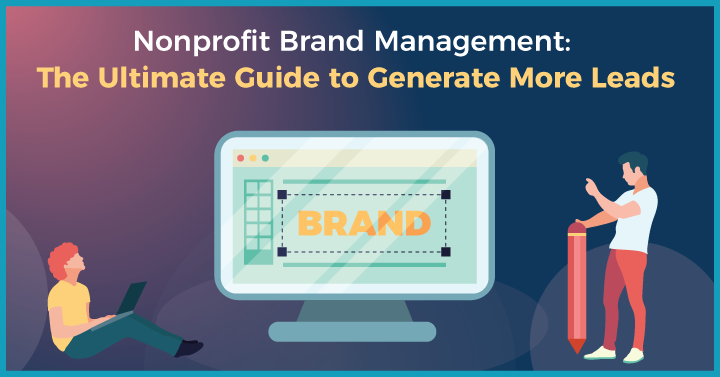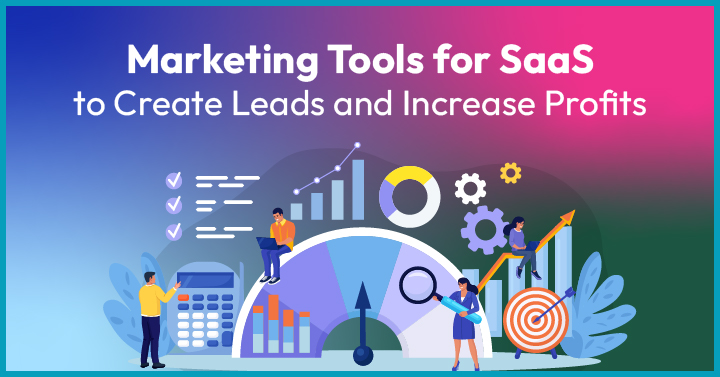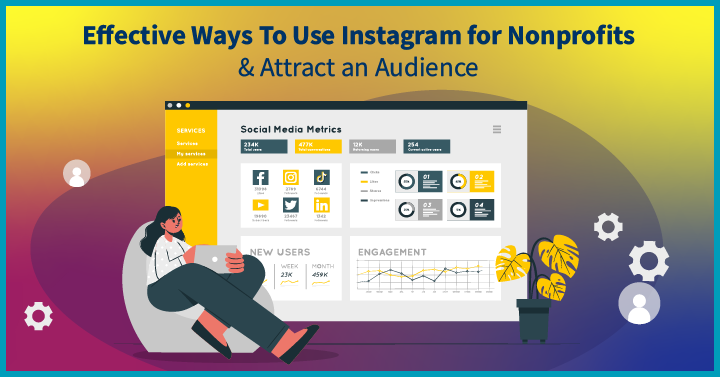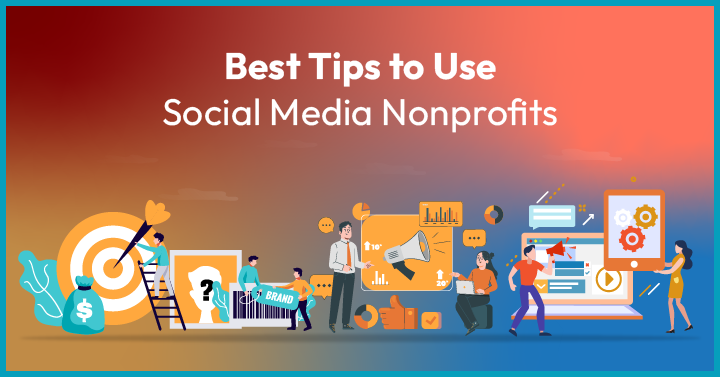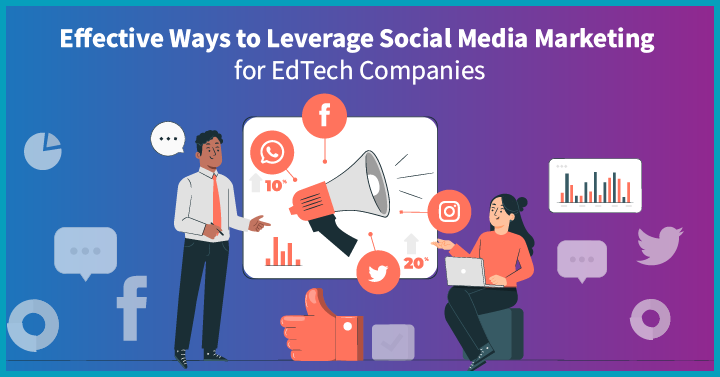You’ve finally built a website for your nonprofit. But, how to spread the message about your mission? How to attract potential donors to your website? With the help of content marketing for nonprofits, you will be able to appear on top of search results and attract supporters, volunteers, and donors.
Remember the 2014 ALS ice bucket challenge that accelerated the fight against ALS?
Whether your goal is to attract more donors or recruit volunteers, you can leverage the power of content marketing to achieve your goals. This guide will take you through the best content marketing strategies to amplify your organization’s mission, attract volunteers, and solicit donations.
To read about our comprehensive article on digital marketing for nonprofits, click here.
1. What is Content Marketing for Nonprofits?

Nonprofit content marketing is an effective way to create valuable content that inspires your target audience. When you create evocative content, your audience will see your human side and understand the need to support your organization. It is an inbound marketing strategy that establishes “thought leadership”. It means when someone searches for a cause or charity – your blogs, social media posts, website, and articles will be sought out for their authority.
For instance, if your NGO is fighting against child labor and someone is looking for news on child labor – your website is ideally shown up on top of search results – if it has informative & relevant content.
When getting started with a content marketing strategy, you may ask yourself why your nonprofit needs a website/blog and how you should create content. In this section, we tried to answer the most frequently asked questions on content marketing strategy for nonprofits –
- How do nonprofits create content?
Nonprofits are required to work on proposals and sales collaterals to get grants, funding, and donations. Nonprofits need various types of content such as – blogs, guest posts, social media content, emails, and press releases that sound appealing and inspiring.
- Should a nonprofit have a blog?
Yes. Your nonprofit organization should have a blog or website to increase its legitimacy when soliciting support. It helps your potential audience and partners better understand your mission and objectives – which is very important when seeking donations, grants, or tenders.
- How do you write a nonprofit blog post?
You should create a great blog post so that people will understand the cause you are supporting and your mission. For instance, if your nonprofit works for low-income communities, you should post content on – healthy meals, low-cost recipes, nutritious meals, and so on. You can increase the chances of your visitors staying on the page by creating informative, clean, and well-structured posts.
- How often should a nonprofit blog?
A nonprofit should post a blog at least once or twice a week. The posts can be as low as 250 words. However, if you want to drive more traffic to your website, you should write a post of a minimum of 1500 words.
- How often should a nonprofit send emails?
Nonprofits can send 2-4 emails per month, where at least one can be a newsletter. Other emails can be anything like a case study, survey, success story, or fundraising campaign.
- How often should a nonprofit send a newsletter?
As a content marketing strategy for nonprofits, you can send 1-2 newsletters per month. However, it depends on your objectives and the type of content you are distributing. For instance, if you told your readers that you are going to email them twice a month, you should stick to the frequency.
- Which social media is best for nonprofits?
Well, Twitter is one of the best social media platforms for nonprofits. It offers a direct opportunity for NGOs to connect with potential supporters and volunteers. Besides Twitter, one can be active on Facebook, Instagram, and LinkedIn to reach a wider audience and get better engagement.
- How do nonprofits get publicity?
Nonprofits get publicity from social media platforms like – LinkedIn, Twitter, Facebook, and Instagram. Many NGOs invest in SEO to improve brand awareness and drive thousands of organic traffic. Over time, SEO can yield higher ROI, improve brand awareness, drive conversions and help nonprofits grow their network.
2. How Does Content Marketing Help Nonprofits Achieve Their Goals?
Content marketing for nonprofits helps improve brand visibility, engagement, and, more importantly, revenue. Though content marketing is associated with for-profit businesses, many NGOs and nonprofitable organizations rely on content marketing to drive results.
While other businesses chase growth and revenue, your business model is different. Your job is to find, engage and retain donors & supporters. Even if your nonprofit sells anything, it must be discoverable to support its goals.
From fundraising to advocacy to volunteering – nonprofits need different forms of support. Before delving deep, let’s first understand the goals that nonprofits can achieve with content marketing –
Goal 1: Promote your message
Advocacy is one of the first goals of nonprofits, which can be achieved through content marketing. You can communicate your message on various platforms and spread the word about the initiatives you will take.
According to nonprofit content marketing statistics, 95% of donors consider content created by nonprofits as trustworthy. You can keep donors emotionally connected with your organization through impactful content. It will ultimately motivate them to take part in your nonprofit marketing campaign or make a donation.
Goal 2: Increasing brand awareness
Content marketing for nonprofits helps build brand awareness by taking your organization in front of the right audience at the right time and on the right platform. For example, the 5km Run/Walk by PAWS Chicago draws in a crowd of 6,000+ people and 2000+ pets each year. This nonprofit raises money through registrations.
You can choose videos, webinars, blogs, or podcasts to increase your brand awareness. Make sure to set the right tone and message so that people can relate it to your cause. You will likely see a significant increase in donations – increasing your brand reputation.
Goal 3: Raise funds and donations
When you produce quality content consistently, your audience will find you trustworthy and pass your content through retweets, likes, shares, and word-of-mouth. By nature, people want to help those in need. However, they need to be reminded of ways to help.
By producing relatable or engaging content, you will see more supporters, which will eventually help raise funds.
3. What Are the Types of Content Marketing for Nonprofits?
3.1 SEO Content
It is the first type of content we can think of when it comes to nonprofit content marketing. From website content to blog posts, guest posts, eBooks, case studies, and more – it aims to show up in the top SERPs for relevant keywords.
Write high-quality content that is optimized for search engines as well as your target audience. If you are producing SEO content in a haphazard manner, hoping that it will eventually rank, it’s time to commit to a methodical SEO strategy for your nonprofit.
3.2 Social Media Content
You can educate and engage your target audience with social media posts. To leverage the benefit of social media content, you can either repurpose existing content or create short forms of content, LinkedIn snippets, and Twitter tweets to convey your message.
It could also include brief discussions, explainer videos, the latest news, event updates, and live chat. The tone of social media content should match the tone of your followers.
3.3 Visual Storytelling
Did you know that our brain processes visual images 60,000 times faster than text? This latest generation of platforms allows your organization to display high-quality information, illustrations, and multiple image elements. When you tell stories through content, be honest and open. It will help you create powerful stories that will move your audience.
Be relatable and personal, so your audience can understand your nonprofit’s mission. With tons of free stock images for nonprofits, it is easier to produce visually appealing content.
3.4 White Papers
A white paper is an in-depth and persuasive guide on a specific topic that presents a problem and provides a solution. They are a great way to educate readers and prospective audiences on topics related to your nonprofit organization. You are in a unique position compared to for-profit organizations and provoke strong emotions by showcasing what you’re doing. Use a lot of images to show the positive impact you are creating.
Here you can find free stocks to use in your whitepapers and showcase your leadership. Below are a couple of interactive nonprofit whitepaper examples –
https://www.foleon.com/examples/tag/white-papers
3.5 Case Studies
A case study is a detailed study of a particular case in a real-life context. Case studies are the best way to let your followers know how their donations are making a difference. For example, a community building nonprofit might create a summer camp they offer and include how the young leaders contributed towards improving the community. You’ll need to access the data about your chosen issue or subject to make an impactful case study.
Habitat for Humanity East Bay/Silicon Valley created a social impact study that showed the impact of a new home on the life of their past clients.
You can also go through the Opportunity Divide case study of Year Up, which provides young adults from low-income backgrounds with a training program to develop their skills.
3.6 Press releases
Nonprofit press releases are factual news stories written for media coverage. They can also be posted on websites to optimize for search engines. The best way to grab the attention of potential donors is by humanizing and engaging the readers. Nevertheless, the first two sentences should be catchy and create curiosity among readers. Here are some guidelines for writing an effective press release for your nonprofit.
Check out some of the best examples of the press release for nonprofits – Foundation Event, Baldrick’s Foundation, and Journal of Marketing.
3.7 Virtual Events and Webinars
You can use live events, webinars, Q & A sessions, and panel discussions as a part of your content marketing strategy. Today, online platforms make it easier to spread your message than before, reducing the barriers of disability and distance. As a result, you can use virtual events and other forms of content marketing for nonprofits.
The best example of a nonprofit marketing campaign is Sydney Opera House’s escape rooms which encouraged the audience to create their online challenge.
3.8 Podcast Series
Podcasts are a great way to build a loyal and engaged community, exploring any subject slowly. Like webinars and virtual events, podcasts can bring the voice of people, subject experts, and volunteers directly into the minds of your target audience.
There is no shortage of platforms for nonprofit podcasts. Here are some of our favorite podcasts –
The Good to Growth, formerly known as Hubcast, covers a wide range of topics in the podcast world. With 80+ episodes, the podcast is focused on multiple aspects of nonprofit governance, development, and fundraising goals.
The First Day Podcast from Find Raising School is a weekly podcast that provides the latest news and information on fundraising and philanthropy. With 200+ episodes, one can know everything about the latest advancements in fundraising and nonprofit technology.
3.9 Annual Reports and Testimonies
You can share annual reports of your nonprofit organization to show your activity and expenditure for the year. That should be exciting news to share, mainly if you are doing good work at your nonprofit. Below are some examples of nonprofits that have shared their annual reports and proved their bonafide.
DREAM – It shouldn’t be surprising that the nonprofit has a beautifully designed annual report. The NGO also hosts its annual report on a third-party platform with beautiful images, student stories, and donor messages. We loved the ways they showed the key stats about the community.
350 – The annual report of this NGO combines a lot of elements to keep the readers engaged. They integrated explainer videos throughout the report so that the users get more information about their important nonprofit marketing campaign.
3.10 Video Content
Videos are the popular forms of content marketing for nonprofits that include live streams, interviews, testimonials, success stories, short films, and documentation. In addition, explainer videos are a great way to introduce your organization and share your mission.
According to studies by Eye View Digital, the use of video on landing pages increases the conversation by 86%. When you give your audience a chance to shape a story, they engage with it more profoundly. Here are some examples of nonprofit videos that inspired millions of people –
This video of Rainforest Alliance used humor to inspire action and show people how they can help. It is a great way to grab the attention of followers and target audiences.
Love Your Brain has one of the most powerful nonprofit videos that feature people impacted by the organization’s work.
4. 5-step Content Marketing Strategies for Nonprofits

- Identify Topic Clusters
Content marketing for nonprofits is constantly evolving, and it is tough to keep up with the latest trends. The goal is to position your website as a subject matter expert and build trust.
Interlink the pages to help search engines understand how to crawl across your website and rank it; without internal and external links, your cornerstone content becomes isolated.
As a part of content marketing for nonprofits, we advise you to restructure your entire website around multiple topic clusters and link them to relevant content. You can use the Yoast SEO plugin to identify topic clusters and link them seamlessly if you have a WordPress site.
- Find Keyword Ranking Opportunities
Keywords and phrases related to your nonprofit’s services provide sign spots to search engines to find your website. While the top of the keywords is different for nonprofits, choosing accurate and relevant keywords for your website will help it rank high in SERP results.
For instance, if you are an environmental group with initiatives on water-related issues, you may want to consider using keywords like – “saving the planet,” “clean up the beaches,” or “protect sea animals,” and so on. Focus on keywords that show how your nonprofit is unique. Answer the below questions before you brainstorm the keywords –
- Who do you serve?
- What is your primary CTA?
- What are you going to do for your audience?
Answering these questions will help you identify long tail and relevant keywords. You can weave your target audience into keywords and phrases if your nonprofit is service-based. For instance, if you provide cancer information, you might use keywords like – “diagnosed with cancer,” “cancer survivor,” and so on.
- Create Cornerstone Content
A specific page or piece of content on your website that covers a broad range of topics and links to multiple subtopics becomes cornerstone content. It also helps you build authority on any given subject. For instance, the cornerstone content “save the planet” can be linked to related topics such as – “plant trees,” “reduce the carbon footprint,” “save water,” and so on.
You can spread topic authority by linking relevant topics from the cornerstone content page. For example, in the above case, when google crawls the “save water” post, it will consider all the related keywords and issues.
To find help with topic relevance, you can use the tool Data Highlighter on Google Search Console. It highlights the key areas such as title, category, author, image, date published, and ratings.
You can also create custom highlights to show important pages on the website.
- Publish and Manage Content
Once you have decided on the content marketing strategy, you need to make sure you create, publish and manage content for wider reach.
According to sources, 70 million posts are published on WordPress every month. Publishing content on your nonprofit’s website is the best way to focus on your mission, communicate with like-minded people, and gather supporters.
Start creating content workflows that include – initial outline, writing, reviewing, editing, final approval, and publishing. Before you publish your content, ask yourself the below questions –
- What drives your audience to the content?
- What kind of experience are they getting?
- How well are they engaging?
You need to figure out what exactly your target audience needs. The trick is in recognizing their problems and coming up with a content strategy that helps them deal with their problem at different levels of the content marketing funnel.
It can be a great way to experiment with your content strategies on multiple platforms like – Medium, Reddit, LinkedIn, and eHow and drive people to your nonprofit. You can also run email marketing campaigns, social media campaigns, and press release campaigns at frequent intervals to tell your story and grab your audience’s attention.
- Monitor the Performance
It is important to understand what kind of content is performing well and what’s not. Google Analytics plays a vital role in helping you understand your performance. It is critical to monitor and analyze the performance of each piece of content regularly. Here are the KPIs to track –
- Traffic
If nobody lands on your website, it doesn’t matter how unique and informative your blog posts are. Traffic is a critical metric that can be categorized into users, pageviews, unique pageviews, and sessions. Use raw data from these metrics to get a rough idea of the traffic coming to your website’s individual pages.
- Conversions
So, people are visiting your website. But what are they doing after going through your posts? Are they taking actions like – donating, filling up the newsletter, or signing up for a volunteer program? The conversion metric will help you understand if they took any action and helped you achieve your goals.
- Engagement
The amount of traffic you get on your website is a measure of your click on your links. However, you need to track their time on your website to determine if they engage with your content.
- Authority
It is an important metric to measure, as it helps build your brand, increase trust and improve your SEO. You can check your website’s authority using Moz, Ahrefs, or SEMRush.
5. Case Study Examples of Nonprofit Content Marketing
- Samaritan’s Purse
The NGO made a humorous how-to video explaining the process of packing a shoebox for their Christmas Child initiative. In addition, it presented vital information about what participants should and shouldn’t pack.
- Lincoln Park Zoo
This nonprofit organization had an adopt an animal program where sponsors get an adoption certificate, a plush of the animal they are sponsoring, and a fact sheet. As a result, the Park Zoo gives its sponsors a better idea of how their donations are impacting the zoo and the lives of animals living in the zoo.
- To Write Love on Her Arms
Hosted a Virtual 5K to encourage runners from across the country to join walking or running through their communities. This program allows supporters to participate no matter where they live.
About Us
Growth Ganik is a rapidly evolving digital marketing agency in Sydney, Australia that specializes in SEO, content marketing, marketing strategy and lead generation.
We work with clients from leading brands and industries such as B2B SaaS, nonprofits and more to develop profitable digital marketing solutions that are data-driven to support all kinds of business goals from widening user bases, gaining more traction for online engagement, to increasing conversion and helping businesses scale up.
For creative tailor-made digital solutions and sustainable growth insights, get in touch with us!




